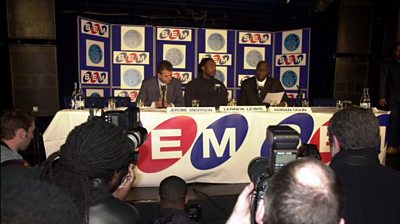These vary from pre-planned controlled events to potentially hazardous ad hoc situations where the risk will depend on the size, location – indoor or outdoors – type of conference, the mood of the audience, and access to the public. Also covers recording training at sports grounds.
What Can Go Wrong?
- General hazard and fire
- Electrical safety
- Slips and trips.
- Podium/falls.
- Pushing, jostling with other news teams.
- General violence.
Legal/91�ȱ� Requirements
- There are no specific legal requirements to draw to your attention
Control Measures
General Controls
- Check position to allow safe access to stage and exits
- Check location of emergency exits and become familiar with local emergency arrangements and procedures. Never obstruct emergency exits or fire routes
- Be aware of electrical safety, e.g., when using power supplies for lighting, or when connecting broadcast equipment to audio/video distribution systems. Check with host before using outlets. See Electrical Equipment (Portable)
- Avoid cables and equipment in walkways. Cover / fly trailing cables
- If standing/working on a podium, consider the potential load you might be placing on it, particularly where a number of press members simultaneously crowd on to it to gain a vantage point
- Check height and edging, raised edges are useful to indicate the edge, but can create a trip risk
- Plan filming/recording location on recce or on arrival
- Presenters or broadcast equipment operators must make themselves aware of potential slip, trip and fall hazards before getting involved in action
- Assist by back watching other team members. Consider the use of a second person when working in scrums
- Think about subject of the conference – if feelings are likely to be inflamed, consider use of a second person and plan what to do if the situation escalates
- If large crowds of fans or spectators are likely, or if protesters may be present, please see ‘Crowds, Demonstrations and Protests’ and ‘Violence and Aggression’.
Division Specific Issues
- No division specific issues.
FAQs/Did You Know?
- No FAQs.
Events Safety Guide
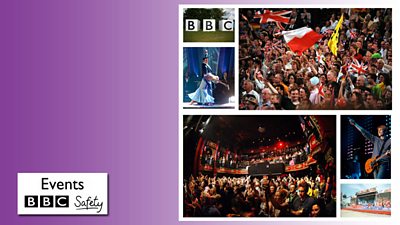 Events Safety GuideVisit the Events Safety Guide for a collection of topics related to organising your event.
Events Safety GuideVisit the Events Safety Guide for a collection of topics related to organising your event.
Sports topics
 Sport Safety GuideThis guide clearly and concisely sets out the key safety hazards and control measures for different production risks, activities and locations.
Sport Safety GuideThis guide clearly and concisely sets out the key safety hazards and control measures for different production risks, activities and locations.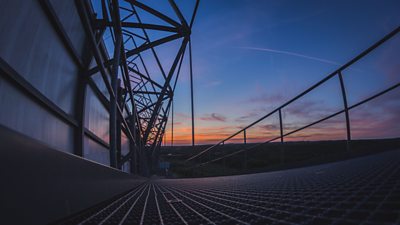 Gantries & High Level PlatformsA guide to working safely on high level gantries, walkways or platforms within stadia, arenas or other public venues
Gantries & High Level PlatformsA guide to working safely on high level gantries, walkways or platforms within stadia, arenas or other public venues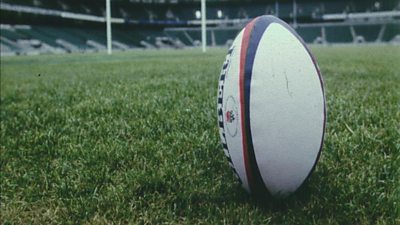 Broadcast: Presentation and Linking PositionsPresentation or linking involving a studio facility; a permanent space or temporary installation.
Broadcast: Presentation and Linking PositionsPresentation or linking involving a studio facility; a permanent space or temporary installation. Crowds, Demonstrations and ProtestsGuidance on working with crowds, demonstrations and protests.
Crowds, Demonstrations and ProtestsGuidance on working with crowds, demonstrations and protests.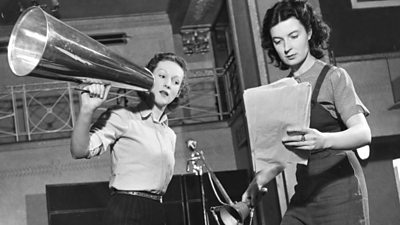 Noise at WorkGuidance on controlling exposure to noise at work.
Noise at WorkGuidance on controlling exposure to noise at work. Sports Events: Recording or FilmingA Safety Guideline to the common risks and controls associated with filming and recording at sports events, including track- or pitch-side.
Sports Events: Recording or FilmingA Safety Guideline to the common risks and controls associated with filming and recording at sports events, including track- or pitch-side.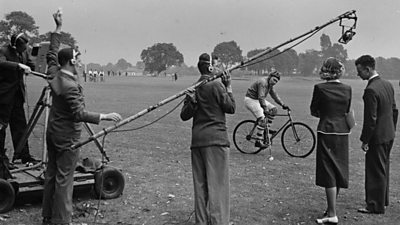 Vehicles Used in Sports CoverageA guide to the safe use and provision of vehicles used in sports coverage, including quad bikes and golf buggies.
Vehicles Used in Sports CoverageA guide to the safe use and provision of vehicles used in sports coverage, including quad bikes and golf buggies.
More from SSR
- Your platform to record accidents, risk assessments, assurance monitoring and inspections
- Safety Equipment StoresJust one number to call: 0844 800 8875
- 91�ȱ� Safety GuidelinesAn A-Z of 91�ȱ�'s Health and Safety Guidelines
- Safety Advice Line: 0370 411 0464 Email: safety@bbc.co.uk
Events guidance - key links:
- Exhibitions
- General Guidance
- Indoor Location Recce Checklist
- Outdoor Location Recce Checklist
- Major Incidents & Emergency Planning
- Marketing and Promotional
- Noise Exposure
- Planning and Management
- Responsibilities
- Responsibilities Form
- Laser Lighting Effects
- Strobe Lighting
- Temporary Stages and Rostra
Health topics - key links:
- (91�ȱ� network only)
- Contributors Fitness to Participate
- Display Screen Equipment (DSE)
- (91�ȱ� network only)
- First Aid and Welfare on Location
- International Travel - Risks & Health
- Manual Handling
- Mental Health: 91�ȱ�page
- (91�ȱ� network only)
- Personal Health and Wellbeing
- Pregnancy
- Psychological Trauma Support & Trauma Risk Management (TRiM)
- Tiredness and Fatigue
- Travel Health Contacts
91�ȱ� High Risk - key links:
- CBRN and Industrial Spills
- Covert Filming
- Crisis Management and Security Support
- Demonstrations, Protests and Crowds
- Disaster Coverage
- Door Stepping
- (91�ȱ� network only)
- (91�ȱ� network only)
- Public Order
- Safety Equipment Stores
91�ȱ� Journalism - key links:
91�ȱ� Productions - key links:
- Aerial Filming and Airfields
- Animals: Displaying and handling for performance
- Boats: Working on
- Children and Young People
- Driving
- Electrical Equipment and Systems
- First Aid and Welfare on Location
- Food Safety (Cooking and Catering)
- Remote Location Working
- Roads and Streets: Working by
- Security of Productions on Location
- Stunts
- Tiredness and Fatigue
- Unmanned Aerial Systems (UAS aka Drones)
- Vehicles: Recording in, from and around
- Working at Height: Mobile Elevating Work Platforms
- Working at Height: Tower Scaffolds
- (91�ȱ� Network only)
91�ȱ� Security - key links:
91�ȱ� Sport - key links:
About this site
This site describes what the 91�ȱ� does in relation to managing its health, safety and security risks and is intended for those who work directly for the 91�ȱ�.
It is not intended to provide instruction or guidance on how third parties should manage their risks. The 91�ȱ� cannot be held liable for how this information is interpreted or used by third parties, nor provide any assurance that adopting it would provide any measure of legal compliance. More information
Some links on this site are only accessible when connected to the 91�ȱ� network
